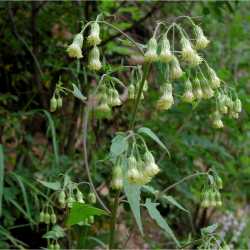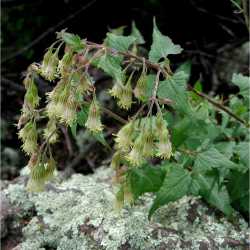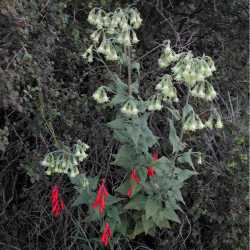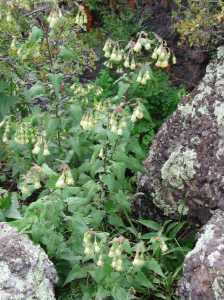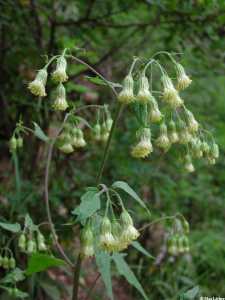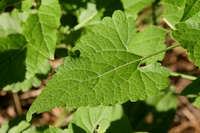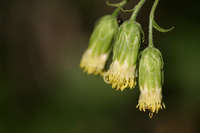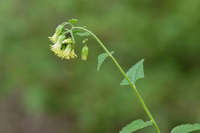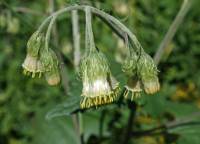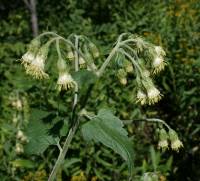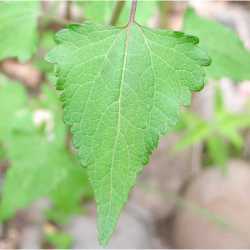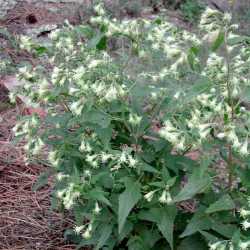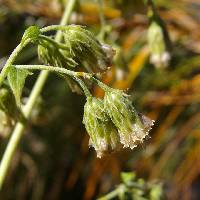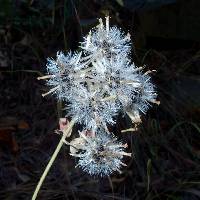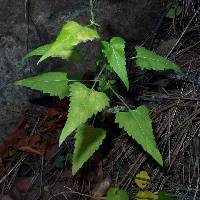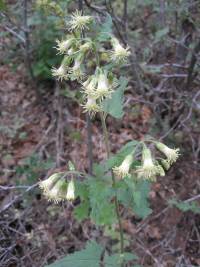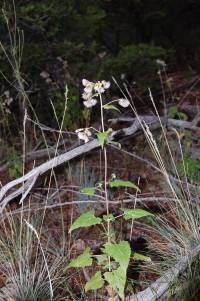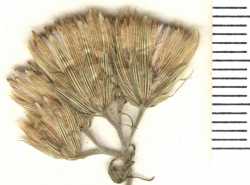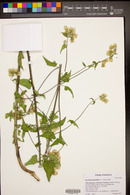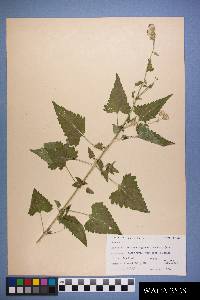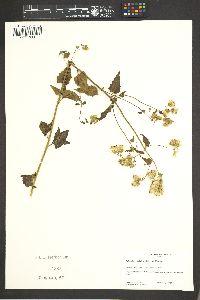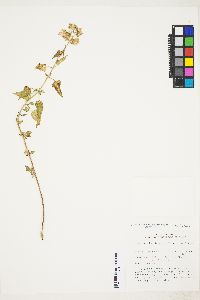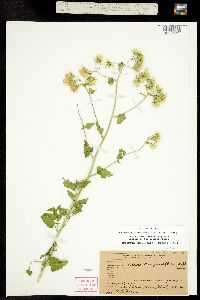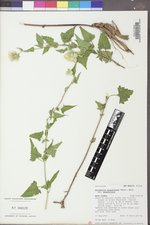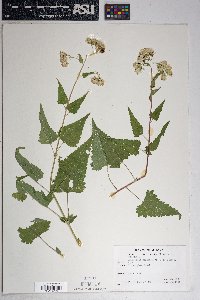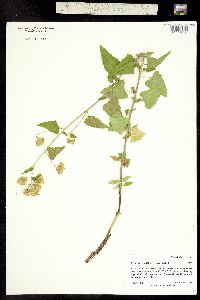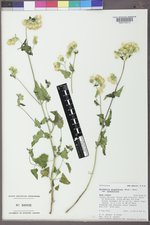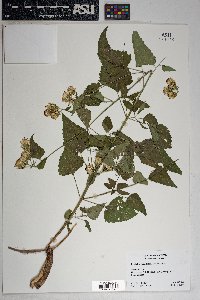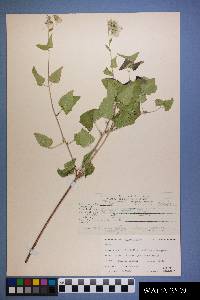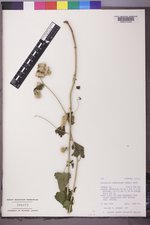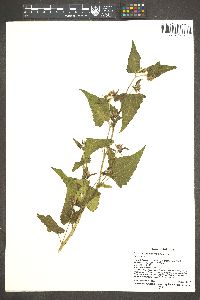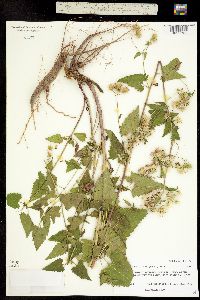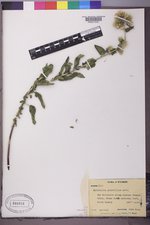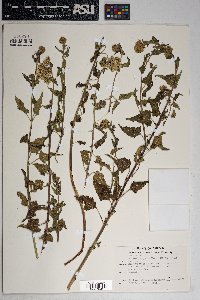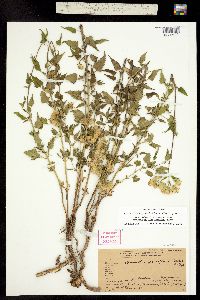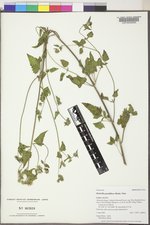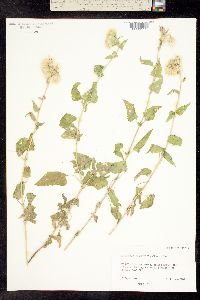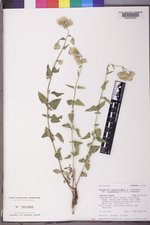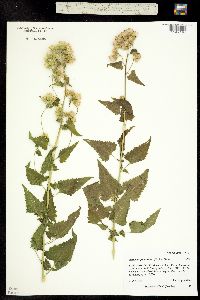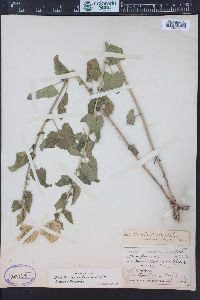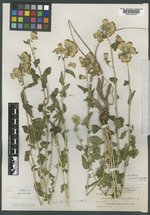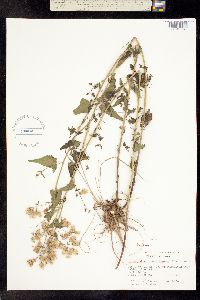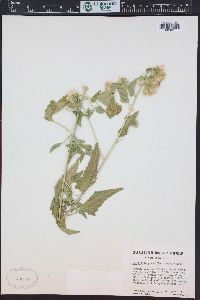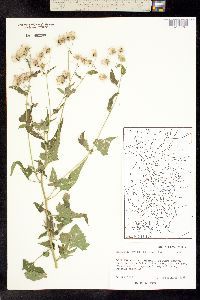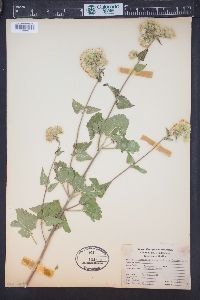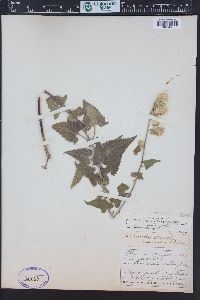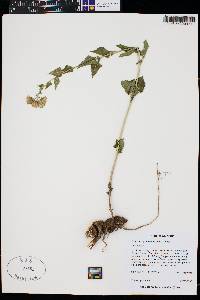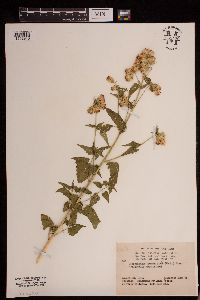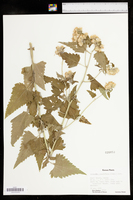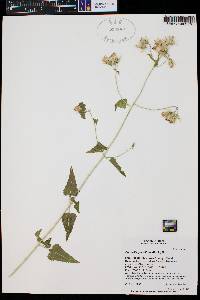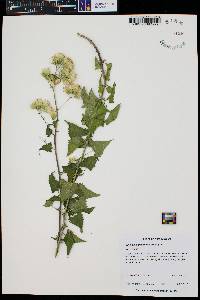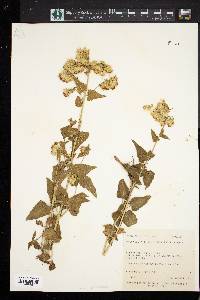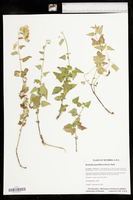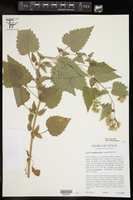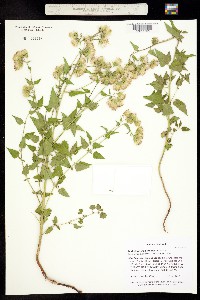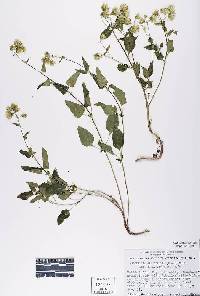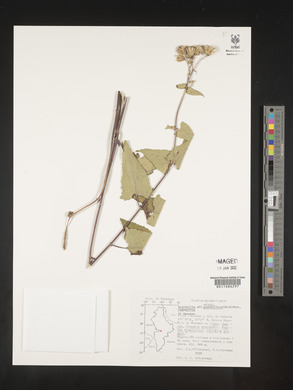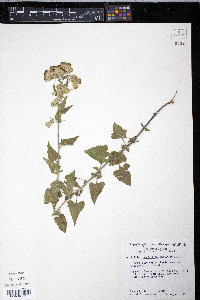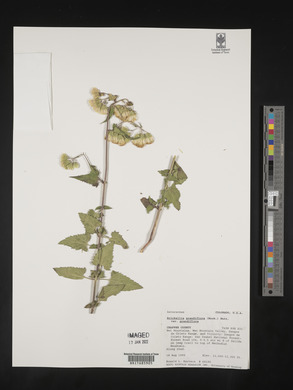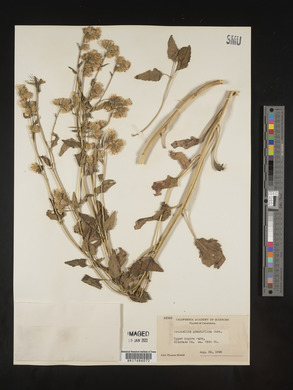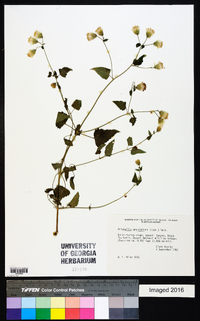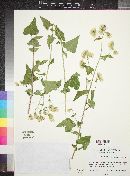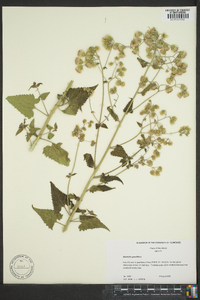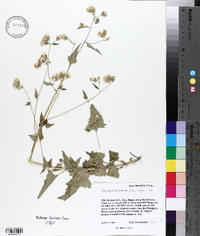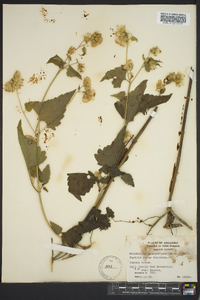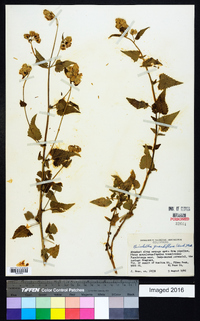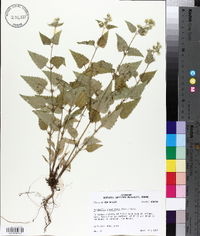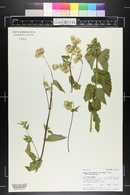
|
|
|
|
Family: Asteraceae
Tassel-Flower Brickellbush, more...tasselflower brickellbush, mountain brickellbush, tasselflower brickellia
[Brickellia grandiflora var. grandiflora, moreBrickellia grandiflora var. petiolaris A. Gray, Brickellia umbellata (Greene) Rydb., Coleosanthus congestus , Coleosanthus garrettii , Coleosanthus grandiflorus (Hook.) Kuntze, Coleosanthus populifolius] |
Perennials, 30-95 cm (taproots thickened). Stems branched, puberulent. Leaves opposite or alternate; petioles 10-70 mm; blades 3-nerved from bases, deltate-ovate, lance-ovate, or subcordate, 15-120 × 20-70 mm, bases acute, truncate, or subcordate, margins crenate, dentate, or serrate, apices attenuate, faces puberulent and gland-dotted. Heads (nodding in flower and fruit) in loose, corymbiform or paniculiform arrays. Peduncles 4-30 mm, pubescent. Involucres cylindric or obconic, 7-12 mm. Phyllaries 30-40 in 5-7 series, greenish, 4-5-striate, unequal, margins scarious; outer lance-ovate to lanceolate (pubescent, margins ciliate, apices long-acuminate), inner lanceolate to lance-linear (glabrous, apices acute to acuminate). Florets mostly 20-40(-70); corollas pale yellow-green, 6.5-7.5 mm. Cypselae 4-5 mm, hispidulous to hirtellous; pappi of 20-30 white, barbellate bristles. 2n = 18. Flowering Jul-Oct. Rocky hillsides, shaded forests, dry slopes, canyons; 1200-3000 m; Ariz., Ark., Calif., Colo., Idaho, Kans., Mo., Mont., Nebr., Nev., N.Mex., Oreg., Tex., Utah, Wash., Wyo. FNA 2006, Heil et al 2013 Duration: Perennial Nativity: Native Lifeform: Subshrub General: Perennial herb, 30-95 cm tall, from a woody caudex and usually thickened taproot; stems branched and puberulent. Leaves: Opposite or alternate, on petioles 1-7 cm long; blades 3-nerved from bases, triangular, deltate-ovate, or lance-ovate, 1.5-12 cm long by 2-7 cm wide, bases acute, truncate or subcordate, apices attenuate, margins crenate, dentate, or serrate, faces puberulent and gland-dotted. Flowers: Flower heads discoid, often nodding, arranged in loose panicles, the peduncles 4-30 mm long, pubescent; involucre (ring of bracts wrapped around the flower head) cylindric or obconic, 7-12 mm high, the bracts (phyllaries) 30-40 in 5-7 series, greenish, 4-5 striate, unequal, with scarious margins; florets 20-40, all discs, the corollas pale yellow-green, 7 mm long. Fruits: Achenes 4-5 mm, hispidulous to hirtellous, topped with a pappus of 20-30 white, barbellate bristles. Ecology: Found on dry rocky hillsides, often in shaded forests or in canyons, from 4,000-10,000 ft (1219-3048 m); flowers July-October. Distribution: Western US, from WA to MT, south to CA, AZ, NM, TX, and AR. Notes: Brickellia is a genus of shrubs and perennial herbs with all disc flowers, these usually white to cream colored; flower heads wrapped in several rows of bracts (phyllaries), the outer rows shorter than the inner rows; and 10-nerved seeds topped with white tufts of bristles. B. grandiflora is distinguished from other Brickellia by its stems that branch all along their length; the long, slender petioles bearing distinctively triangular leaves with tidy round teeth on the margins and long-pointed tips; and the loose clusters of flowers that nod or dangle like tassels at the ends of the branches. Resembles B. floribunda but that the leaves of that species are more of a slightly rounded triangle shape, and lack the long-attenuate pointed tip; and the flower heads do not usually dangle. Ethnobotany: Leaves used medicinally as an antirheumatic, a liver medicine, to treat flatulence, overeating, headaches, and influenza; the seeds are said to be poisonous by one tribe and eaten as a grain by another tribe; the plant is used ceremonally; and the branches used to make brooms. Etymology: Brickellia is named for Dr. John Brickell (1749-1809), a botanist and physician in Georgia; grandiflora means large flowered. Synonyms: Brickellia grandiflora var. petiolaris, Coleosanthus grandiflorus, Coleosanthus umbellatus, Eupatorium grandiflorum Editor: SBuckley 2010, AHazelton 2015 A western sp. with deltoid or cordate lvs and merely barbellate pappus, extends e. to s. and c. Mo., and may prove to occur in our range. It would key to Kuhnia. Gleason, Henry A. & Cronquist, Arthur J. 1991. Manual of vascular plants of northeastern United States and adjacent Canada. lxxv + 910 pp. ©The New York Botanical Garden. All rights reserved. Used by permission. |
|
|
|
This project was made possible in part by the Institute of Museum and Library Services [MG-70-19-0057-19].
Powered by Symbiota


